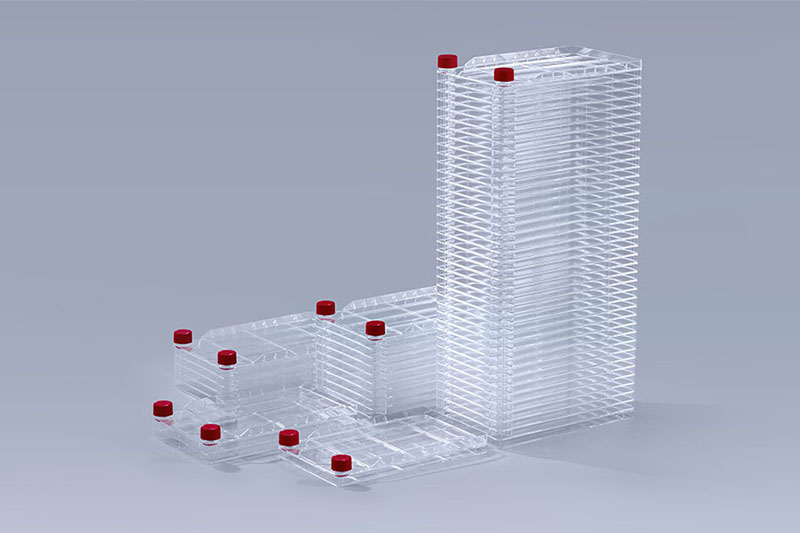When we use cell factories to culture cells, the growth status of the cells is affected by various factors. These factors may seem inconspicuous, but if not paid attention to, they will cause heavy damage to the cells. So, how do small details when using cell factories affect cell growth, and how can we avoid pitfalls when using cell factories to culture cells?
1. Degree of contact between cells
Normal cells (diploids) have attachment contact inhibition, and cell growth stops after overgrowth. However, abnormal cells such as tumor cells have weak contact inhibition and can grow to higher cell densities, but some cells overgrow. The damage is difficult to reverse, so it is not recommended to have too high a cell density when culturing cells.
Important points: Generally, cells cultured in a cell factory can be passaged when the cell confluence reaches 70-80%. Do not overgrow the cells.
2. Cell growth attachments
Adherent cells will adhere to the wall under normal circumstances, but some cells themselves do not adhere firmly or have poor adhesion. At this time, coating attachments can promote cell adhesion. Therefore, when cultivating some special cells, the cell factory needs to be coated. Used after. Commonly used matrices include polylysine (D type, L type), gelatin, collagen, and extracellular matrix mixture, which can be selected according to needs during culture.
Key point: When the cell adhesion in the cell factory is poor, the matrix can be used to coat the cell factory.
3. pH value of culture medium
Most cell lines grow best when cultured in cell factories at around pH 7.4, and the indicator of conventional media is phenol red, so in most cases, the media we see are red, but different media There will be differences in color, for example DMEM is a little darker than 1640. When cultivating cells, you can also judge the cell status based on the color of the culture medium in the cell factory. For example, as the cells grow, the color of the culture medium will become lighter and yellower.
Key points: Pay attention to the color change of the culture medium when culturing cells, and deal with any abnormalities in a timely manner.
The FAI climbed 5.9 percent year-on-year in the first 11 months of 2018, quickening from the 5.7-percent growth in Jan-Oct, the National Bureau of Statistics (NBS) said Friday in an online statement.
The key indicator of investment, dubbed a major growth driver, hit the bottom in August and has since started to rebound steadily.
In the face of emerging economic challenges home and abroad, China has stepped up efforts to stabilize investment, in particular rolling out measures to motivate private investors and channel funds into infrastructure.
Friday's data showed private investment, accounting for more than 60 percent of the total FAI, expanded by a brisk 8.7 percent.
NBS spokesperson Mao Shengyong said funds into weak economic links registered rapid increases as investment in environmental protection and agriculture jumped 42 percent and 12.5 percent respectively, much faster than the average.
In breakdown, investment in high-tech and equipment manufacturing remained vigorous with 16.1-percent and 11.6-percent increases respectively in the first 11 months. Infrastructure investment gained 3.7 percent, staying flat. Investment in property development rose 9.7 percent, also unchanged.
 English
English



















































 Cell Factory Systems
Cell Factory Systems